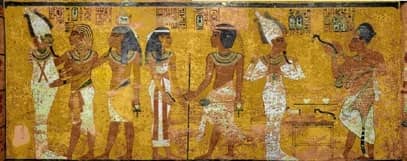Thursday, December 4, 2025
Meaning, Types, Law and Key Judicial Views
Saturday, November 8, 2025
The Legendary Bollywood Movie
Saturday, May 17, 2025
A natural rhythm of life
Thursday, May 15, 2025
A chronological view of global and Indian contexts
GENERATIONS THROUGH TIME
Understanding generations helps us make sense of how historical, social, and technological events shape people’s values, behaviour, and identity. While Western generational labels are widely used, India’s distinct history offers its own unique generational milestones. Below is a chronological exploration of generations from both perspectives.
1. The Lost Generation (approximately 1883–1900)
Global Context: Born in the late 19th century, this generation came of age during World War I. Disillusioned by war and societal collapse, many questioned traditional norms.
Notable Traits: Cynicism, existentialism, artistic innovation.
Indian Parallel: Early freedom fighters and thinkers under colonial rule, facing oppression and beginning the intellectual foundations of the independence movement.
2. The Greatest Generation (approximately 1901–1927)
Global Context: Survived the Great Depression, fought in World War II, and rebuilt the world post-war. Often seen as exemplars of sacrifice and patriotism.
Indian Parallel: The generation that actively participated in India’s independence movement, including key leaders and countless unsung heroes who resisted British rule and laid the groundwork for a free nation.
3. The Silent Generation (approximately 1928–1945)
Global Context: Grew up during World War II but were too young to fight. Known for conformity, discipline, and traditional values.
Indian Parallel: Children of partition and independence. Many faced the trauma of 1947, communal riots, and mass migrations, growing up in the uncertainty of a newly formed India.
4. Baby Boomers (approximately 1946–1964)
Global Context: Born after World War II in a time of economic prosperity, cultural shifts, and social revolutions.
In India: This generation was born post-independence. They experienced Nehruvian socialism, the License Raj, early wars (1962, 1965, 1971), and the Green Revolution. Their worldview was shaped by scarcity, resilience, and national development.
5. Generation X (approximately 1965–1980)
Global Context: Grew up during the Cold War, oil crises, and rise of personal technology. Known for independence and skepticism.
In India: Witnessed political instability (Emergency era, 1975–77), state-controlled media, and the early signs of liberalisation. Doordarshan and transistor radios were cultural staples.
6. Millennials / Gen Y (approximately 1981–1996)
Global Context: Came of age with the internet, globalisation, and 9/11. Values include flexibility, purpose, and tech-savviness.
In India: First generation shaped by post-1991 liberalisation. Saw a boom in education, IT jobs, mobile phones, and cable TV. Culturally global, yet rooted in traditional family values.
7. Generation Z (approximately 1997–2012)
Global Context: Digital natives raised on smartphones, social media, and instant connectivity.
In India: Grew up during the smartphone revolution, e-learning, and social media dominance. Shaped by global pop culture and issues like climate change and mental health. Also faced the impact of the COVID-19 pandemic during their formative years.
8. Generation Alpha (approximately 2013–2024)
Global Context: The first generation fully born in the 21st century. Expected to be the most technologically immersed so far.
In India: Raised with AI, digital classrooms, and streaming content. Heavily influenced by the pandemic-era shift to virtual life and early exposure to devices and online learning.
9. Generation Beta (approximately 2025–2039) (Future)
Global Context: Expected to grow up in a world dominated by AI, automation, climate action, and augmented reality.
In India: Will likely face the challenges of urban density, sustainability, and new-age education formats. May be more globally connected yet locally rooted.
10. Generation Gamma (approximately 2040–2054) (Speculative)
Could witness space tourism, synthetic biology, and hyper-immersive digital realities. Traditional ideas of identity, learning, and work may be radically transformed.
11. Generation Delta (approximately 2055–2069) (Speculative)
May live in an era of post-Earth ambition (like Mars colonisation), advanced AI-human integration, and a redefined concept of "reality."
Conclusion: While labels like Gen X, Y, Z, and Alpha are globally recognised, India’s historical timeline—from colonial rule to tech-boom modernity—adds rich texture to each generational experience. Understanding these layers helps us see not just when people were born, but how their worlds were shaped—and how they, in turn, shape ours.
Sunday, February 23, 2025
The backbone of civilizations
Saturday, February 1, 2025
Some of your favourite foods created by accident
Wednesday, January 1, 2025
An exalted award
Friday, September 20, 2024
HIDDEN BENEFITS OF COMPETITIONS
Saturday, August 31, 2024
THE ACCLAIMED ANIMATION HOUSE
Thursday, August 22, 2024
COLOUR STORY
The Origins Of YellowIt’s not very hard to find the colour yellow all around us. Just take a look out the window and you’ll see flowers, insects and even our own clothing all brimming with this bright colour. But how did yellow come to feature in everyday life? That’s a story that starts far back in time.

Yellow in nature: OchreNowadays, yellow isn’t just a colour used for decoration. It comes in a multitude of shades, from bright to light, and people use these to set a mood or depict certain emotions. But where did it all start? With yellow ochre. Known as an ‘earth pigment’, ochre is a natural mineral that is found in rocks or sand across the globe. It was among the first minerals used by humans.




The first Speaker of the Lok Sabha
GANESH VASUDEV MAVALANKAR Ganesh Vasudev Mavalankar, affectionately called Dadasaheb, the first Speaker of the Lok Sabha, laid the founda...

-
ANNABELLE The real Annabelle doll is a well-known case of alleged paranormal activity, made famous by Ed and Lorraine Warren, two well-know...
-
WHY IS SUGAR WATER STICKY? Sugar water is sticky because sugar molecules have a strong affinity for water molecules, forming hydrogen bonds ...
-
ANNA MANI Anna Mani, often hailed as the Weather Woman of India, was a visionary physicist and meteorologist whose pioneering work reshape...
































